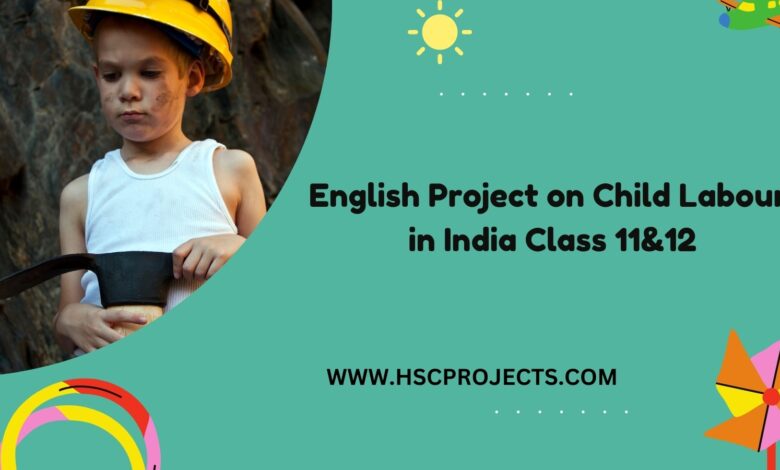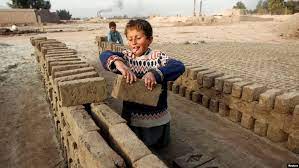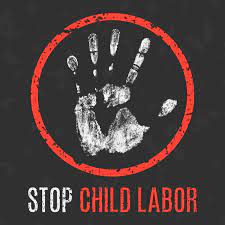
English Project on Child Labor in India Class 11&12
INTRODUCTION
One of India’s most pervasive societal problems is child labor. Several businesses, including agriculture, manufacturing, construction, mining, and domestic service, employ children. India is the country with the most child laborers in the world, according to the International Labour Organization (ILO), with an estimated 10 million kids between the ages of 5 and 17 working in some capacity.
Child labor is a widespread problem that is complicated by a number of social, economic, and cultural variables. Some of the main causes of the perpetuation of this issue include poverty, illiteracy, and insufficient enforcement of child labour laws. In addition to robbing kids of their childhood, child labor jeopardizes their health, education, and general well-being.
In order to address the issue of child labour, the Indian government has taken a number of actions, including the adoption of laws and regulations to uphold children’s rights. To end this practise and guarantee that all children in India have access to education, healthcare, and other fundamental rights, however, much more work needs to be done.

CAUSES OF CHILD LABOR
India’s problem with child labour is complicated and has numerous underlying reasons. The following are some of the main causes of this issue’s enduring nature:
Poverty: One of the main factors contributing to child labour in India is poverty. Many low-income families rely on the money their kids make to make ends meet. Frequently, they put their kids to work since they can’t afford to send them to school.
Lack of Education: Lack of education is a significant contributor to child labour. Many youngsters who are made to labor come from low-income households that are unable to pay for their education. As a result, they pass up the chance to learn and enhance their prospects for the future.
Cultural factors: It is typical for children to work alongside their parents or other family members in some communities in India. It is challenging to end the cycle of child labour due to this long-standing cultural custom.
Inadequate enforcement of child labor laws: Child labour regulations not being effectively enforced: India has rules against child labour, but they are frequently not carried out as intended. Employers who use underage labourers frequently go unpunished, which encourages them to keep doing so.
Migration: The issue of child labour is also exacerbated by migration from rural to urban regions. Youngsters who go to the city with their parents frequently find themselves working under risky and abusive circumstances.
These are but a few of the reasons why children work in India. A multi-pronged strategy involving education, social welfare initiatives, and efficient law enforcement will be needed to address these concerns.
THE EFFECT OF CHILD LABOUR INCLUDE
Children’s physical, emotional, and psychological wellbeing is severely harmed by child work in India. Following are a few negative effects of child labour:
Health issues: As a result of the hazardous working circumstances they are subjected to, children who are compelled to work frequently experience health issues. Without the right safety gear or training, they could labour long hours in hazardous conditions, which can result in accidents, illnesses, and even fatalities.
Education deprivation: Depriving children of their right to an education is child labour. The inability of many working children to attend school reduces their future possibilities and feeds the poverty cycle.
Social isolation: Social isolation can result from child labour as well. Working kids frequently lose out on opportunities to engage and socialise with their classmates, which may be detrimental to their emotional and social growth.
Trauma psychological: The stress, abuse, and exploitation forced workers face can lead to psychological trauma in the kids. Long-term mental health difficulties like anxiety, sadness, and post-traumatic stress disorder may result from this (PTSD).
Poverty perpetuation: By preventing kids from getting an education and acquiring the skills and information they need to enhance their prospects for the future, child labour keeps them in poverty for longer periods of time.
These are but a few negative effects of child labour in India. Government, civil society, and the business sector will need to work together to address this issue in order to guarantee that all children are safeguarded from exploitation and have access to education, healthcare, and other fundamental rights.
SEVERAL INDUSTRIES IN WHICH CHILDREN WORK
Children work in a variety of industries in India, including:
Agriculture: Especially in rural areas, children are frequently employed in agriculture. They might perform farm labour, picking crops and taking care of cattle.
Manufacturing: Businesses like those that produce textiles, leather goods, and fireworks employ kids as well. They might work in manufacturing, which expose them to risky circumstances and long hours.
Construction: Especially in metropolitan areas, children are employed in the industry. They might conduct additional physical labour duties like hauling items on construction sites.
Domestic work: Many children in India carry out household duties for affluent families as domestic staff. They might put through long hours and endure verbal and physical abuse.
Children are employed in the mining industry, especially in small-scale mines. They might perform their duties in dangerous environments with little or no safety gear.
These are just a few of the Indian industries that employ young people. It will need focused efforts to improve working conditions, offer educational and social welfare programmes, and boost enforcement of child labour laws to address the problem of child labour, which is pervasive in many industries.
RISKY WORK ENVIRONMENT
Indian child labourers are frequently subjected to dangerous working conditions that endanger their health and well-being. The following are some instances of dangerous working conditions:
Children who work in the textile and leather goods sectors may be exposed to harmful substances such dyes, solvents, and heavy metals. This may result in breathing troubles, skin rashes, and other health problems.
Physical strain: Children who engage in manual labour industries such as agriculture, construction, and other fields may be compelled to do physically demanding duties that put strain on their developing bodies and can result in accidents.
Working in small, poorly ventilated spaces: Youngsters who work in factories or mines might be obliged to do so. Other health problems, such as respiratory disorders, may result from this.
Absence of protective gear: It’s common for child labourers to go without the tools they need to do their jobs safely, like gloves, masks, and safety goggles.
Accident risk: Children who work in construction or other occupations that require operating at heights or with heavy equipment run the danger of suffering serious injuries or even death in an accident.
The health and wellbeing of juvenile labourers may suffer in the long run as a result of these dangerous working situations. To address this issue, actions must be taken to enhance working conditions, raise public awareness of the dangers of child labour, and bolster labour law enforcement.
TYPES OF ILLNESS AND INJURIES SUFFERED BY CHILD LABORERS

Children who are required to work in dangerous situations can get a variety of illnesses and injuries. These are a few instances:
Diseases of the respiratory system: Children who work in industries like textiles, leather goods, and fireworks may be exposed to hazardous chemicals and dust, which can result in respiratory conditions including asthma and bronchitis.
Skin disorders: Toxic chemicals that can cause skin irritation, rashes, and other skin diseases can be exposed to children working in sectors like textiles and leather goods.
Musculoskeletal injuries: Children who engage in physically demanding professions like agriculture and construction may be subjected to strains and sprains from their musculoskeletal injuries.
Hearing loss: Children exposed to loud noises while working in industries like construction and fireworks risk developing hearing loss.
Eye injuries: Children who labour in fields like construction or agriculture could be exposed to chemicals or flying debris, all of which represent a risk for eye injuries.
Malnutrition: Children who work as child labourers frequently put in long hours under trying circumstances and may lack access to a healthy diet, which can result in malnutrition and other health issues.
Children who are made to work in dangerous circumstances may endure stress, trauma, and other mental health problems like anxiety and depression.
These are but a few instances of the illnesses and accidents that child labourers in India could experience. Enhancing working conditions, expanding access to healthcare and education, and stepping up labour law enforcement are all necessary to address this issue.
GOVERNMENTAL STEPS DONE TO REDUCE CHILD LABOR

The Indian government has taken a number of steps to stop child labour and defend children’s rights. These are a few instances:
All children between the ages of 6 and 14 are entitled to free and compulsory education under the Right of Children to Free and Compulsory Education Act (RTE), which was passed in 2009. Also, the law forbids child work and requires all kids to go to school.
The National Child Labor Project (NCLP) is a government initiative that offers healthcare, vocational training, and education to children who work in the labour force. The programme also aims to help kids get better and be reintegrated into society at large.
National Policy on Child Labor: Introduced in 1987 and updated in 2016, the National Policy on Child Labor strives to end all types of child labour and offer comprehensive assistance to child labourers and their families.
The government’s Integrated Child Development Services (ICDS) programme offers a variety of services to young children under the age of six, such as health care, nutrition, and early childhood education.
Children under the age of 14 are not allowed to work in any sectors, and children between the ages of 14 and 18 are not allowed to work in hazardous industries, according to the Child Work (Prohibition and Regulation) Amendment Act, which was passed in 2016.
These are only a few examples of the actions made by the Indian government to stop child labour and defend children’s rights. To guarantee that all children in India have access to education, healthcare, and a safe and secure childhood, more work must be done.
NGOs’ EFFORTS TO PREVENT CHILD LABOR
In India, non-governmental organisations (NGOs) have long worked to stop child labour and uphold children’s rights. Here are some instances of NGOs’ initiatives:
Bachpan Bachao Andolan: Since 1980, Bachpan Bachao Andolan (BBA), an NGO, has worked to end child labour in India. The group strives to protect children from child labour, give them education and rehabilitation, and raise awareness of children’s rights.
Child Rights and You (CRY): In India, CRY is an NGO that promotes children’s rights and fights against child labour. The group collaborates with regional governments and non-profit organisations to promote respect for children’s rights, give them an education, and stop child labour.
Save the Children: Save the Children is a global Organisation dedicated to enhancing the lives of kids in India and all across the world. By giving children and their families access to healthcare, education, and other support services, the group seeks to eliminate child labour.
Global March Against Child Labor: The Global March Against Child Labour is a network of nongovernmental organisations (NGOs) and individuals that strives to end child labour all over the world. The group fights for laws and initiatives that safeguard kids’ rights and stop child labour.
An Nonprofit called Pratham seeks to raise the standard of education in India. The group collaborates with local communities to offer education to youngsters, particularly child labourers, who are at risk of dropping out.
The actions performed by Organizations to stop child labour in India are only a few examples. NGOs are crucial in raising awareness of children’s rights, offering education and support services to kids and their families, and fighting for laws and initiatives that safeguard children’s rights.
ORGANIZATION FOR INTERNATIONAL LABOR (ILO):
The International Labour Organization (ILO) is a specialised UN body whose mission is to advance social justice and respectable working conditions globally. From its founding in 1919, the ILO has worked to end child labour and has been a major player in the development of global norms and conventions pertaining to child labour.
The worst types of child labour, such as slavery, forced labour, and trafficking, are to be outlawed and eliminated, according to ILO Convention 182, which was adopted in 1999. India has ratified this agreement.
The ILO has also collaborated closely with the Indian government and other stakeholders to create projects and programmes targeted at stopping child labour and defending children’s rights. Among the actions the ILO has taken in India are:
IPEC, or the International Programme on the Elimination of Child Labor, is an international initiative to do just that. The ILO has carried out a number of IPEC projects in India, including initiatives to stop child labour in the carpet and cotton industries.
Time-bound Program: The ILO and the Indian government worked together to design a time-bound programme to end child labour in India. By 2025, the program’s goal is to end all forms of child labour in India. It was first introduced in 2005.
Developing Capacity: The ILO has been working to increase the ability of government representatives, employers, employees, and civil society organisations to stop child labour and defend children’s rights.
The ILO is dedicated to working with all stakeholders to build a future in which all children are able to enjoy their childhood and realise their full potential. The ILO continues to play a significant role in the battle against child labour in India and throughout the world.
INDIAN SOS CHILDREN’S VILLAGE
A non-governmental organisation called SOS Children’s Village of India is committed to helping disadvantaged children in India. By giving children and their families access to healthcare, education, and other support services, the group seeks to eliminate child labour. Moreover, SOS Children’s Village of India promotes laws and initiatives that safeguard kids’ rights and stop child labour.
Law of 1986 prohibiting and regulating child labour:
The Indian government enacted the Child Labour Prevention and Regulation Act (CLPRA) in 1986 to control and outlaw the use of minors in a variety of jobs and production methods. Children under the age of 14 are not allowed to work in dangerous industries like mining, manufacturing, or construction, according to the law. Moreover, the statute forbids the hiring of minors in risky jobs between the ages of 14 and 18.
The CLPRA also created fines and incarceration as consequences for employers who break the law’s rules. The statute also established a system for the education and training of child labourers as part of their rehabilitation.
THE CLPRA AND SOSCHILDREN’S VILLAGE OF INDIA
SOS Children’s Village of India collaborates closely with the Indian government and other parties to execute the CLPRA’s provisions and stop child labour. The group strives to reintegrate juvenile labourers who have been rescued from dangerous jobs into society by giving them education and vocational training.
Additionally, SOS Children’s Village of India seeks to educate neighbourhood residents, employers, and public servants about children’s rights and the CLPRA’s requirements. The group is an advocate for the CLPRA’s stringent enforcement as well as the creation of laws, regulations, and initiatives that safeguard children’s rights and curtail child labour.
The Child Work Prevention and Regulation Act of 1986 is a significant piece of legislation that aims to stop child labour in India. One of the numerous Charities striving to carry out the provisions of the act and stop child labour in India is SOS Children’s Village of India.
data demonstrating child labour in India
Between the ages of 5 and 14, there were roughly 10.1 million child labourers in India, according to the 2011 Census of India. Although this percentage has been steadily declining over time, child labour is still a serious issue in India.
THESE ARE SOME FURTHER FIGURES CONCERNING CHILD LABOR IN INDIA
According to the National Sample Survey Organization (NSSO), India had 4.35 million or so child labourers in 2010.
The Global Slavery Index 2018 estimates that 8 million individuals in India are victims of modern slavery, including youngsters who are made to work under risky circumstances.
According to a 2019 research by the International Labour Organization (ILO), there were 10.1 million child labourers in India and an estimated 152 million child labourers worldwide.
Agriculture employs the most child labourers in India, followed by manufacturing, domestic labour, and construction.
The states of Uttar Pradesh, Bihar, Rajasthan, and Madhya Pradesh have the highest rates of child labour, according to the 2011 Indian Census.
Children who labour in dangerous industries run the chance of suffering from severe health issues, such as respiratory illnesses, poisoning, and wounds.
These figures demonstrate how widespread and serious the issue of child labour is in India. They also stress the importance of the government, NGOs, and other stakeholders continuing their efforts to stop child labour and defend children’s rights in India.
METHODS FOR ENDING CHILD LABOR

Here are some strategies for ending child labour.
Education: Preventing child labour requires a strong emphasis on education. By educating kids, parents, communities, and society as a whole may learn the value of education and the dangers of child labour. Also, education increases children’s future opportunities, minimising the necessity for them to start working at an early age.
Raising awareness and fighting for children’s rights can aid in the elimination of child labour. Government and civil society can collaborate to lessen child labour by developing awareness campaigns and promoting stricter laws and policies that safeguard children.
Increased access to credit and other resources, as well as better economic conditions, can all contribute to a decrease in the prevalence of child labour. Families who have access to resources are less likely to depend on the earnings that their kids generate through work.
Laws that prohibit child labour should be more strictly enforced in order to help put an end to the practise. This involves ensuring that rescued child labourers receive assistance and rehabilitative programmes, tougher punishments for individuals who employ minors, and holding employers accountable for breaking labour laws.
Empowering women: Since women are frequently the major caretakers and decision-makers in households, empowering women can aid in the prevention of child labour. Women can be better prepared to support their families without relying on the income of their children if they have access to education, work opportunities, and other resources.
Corporate social responsibility: By establishing moral and ethical business practises, businesses can help to eliminate child labour. This entails keeping an eye on their supply chains to make sure that no children are employed in the manufacturing of their products and supporting programmes that advance children’s rights.
Stakeholders may collaborate to end child labour and guarantee that all children have access to education, healthcare, and other fundamental rights by putting these measures into place.
CONCLUSION
In conclusion, child labour is a serious issue in India that robs kids of their youth, education, and possibilities for the future. It not only tramples on children’s rights but also threatens the advancement of society as a whole. A variety of economic, social, and cultural factors contribute to the persistence of child labour, but the government, NGOs, and civil society can assist end the practise through coordinated efforts.
The prevalence of child labour in India has decreased thanks to programmes like the National Child Labour Programme, the Child Labour Prohibition and Regulation Act of 1986, and the National Policy on Child Labour. To address the underlying causes of child labour and guarantee that all children have access to education, healthcare, and a reasonable quality of living, more work must be done.
A multifaceted strategy that involves lobbying, education, better economic conditions, stronger legal enforcement, women’s emancipation, and corporate social responsibility is needed to prevent child labour. Working together, we can end child labour and give every child in India a better future.
BIBLIOGRAPHY
Worldwide Labor Organization. (2019). Findings and trends for global child labour estimates from 2012 to 2016. The document was retrieved from https://www.ilo.org/wcmsp5/groups/public/—-dgreports/—-dcomm/documents/publication/wcms 575499.pdf.
The Indian government. (1986). Legislation prohibiting and regulating child labour. retrieved from Child Labor Act 0.pdf at labour.gov.in/sites/default
The national commission for the defence of children’s rights. (2019). National Child Labor Policy. from https://ncpcr.gov.in/view file.php retrieved? fid=103
India’s UNICEF. (2021). protection of kids. the following was taken from https://www.unicef.org/india/what-we-do/child-protection
India’s Save the Children. (2021). kid labour. from https://www.savethechildren.in/what-we-do/child-protection/child-labor/
India’s SOS Children’s Villages. (2021). our effort. from https://www.soschildrensvillages.in/our-work/
The Indian government. (2011). 2011 Indian Census: Child labour. Taken from “2011-common/censusdataonline.html” at Census India
CERTIFICATE
I hereby certify that I, [Your Name], a student of Class 11/12 at [Your School Name], have successfully completed the project on “Child Labor in India.” This project has been an eye-opening journey, shedding light on the pervasive issue of child labor in our country, its underlying causes, and the various efforts made by the government, NGOs, and other stakeholders to address this critical social problem.
Throughout this project, I delved deep into research, striving to understand the complexities surrounding child labor in India. The project covers essential topics such as the root causes of child labor, its adverse impact on the physical and emotional well-being of children, the industries where children are commonly employed, and the legal and societal measures taken to combat child labor.
By gathering insightful data and statistics from reputable sources, I aimed to highlight the severity of the child labor issue in India. The project emphasizes the urgency of taking concerted actions to protect the rights and well-being of children and ensure a better future for them.
In presenting this project, my sincere intent was to raise awareness about child labor and advocate for the rights of vulnerable children in our society. I am deeply committed to creating a more just and equitable society where every child can enjoy their childhood and access education and a safe environment.
I would like to express my heartfelt gratitude to my teachers and mentors for guiding me throughout this project and inspiring me to explore important social issues. I am also thankful to my school and the resources available to me, which allowed me to conduct thorough research and present this project.
Lastly, I dedicate this project to the millions of children who are still trapped in the clutches of child labor in our country. May our collective efforts lead to a brighter future, free from exploitation, where every child can dream and soar high.
[Your Name] [Class 11/12] [Your School Name] [Date]In order to download the PDF, You must follow on Youtube. Once done, Click on Submit
Follow On YoutubeSubscribed? Click on Confirm
Download English Project on Child Labor in India Class 11&12 PDF






